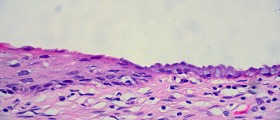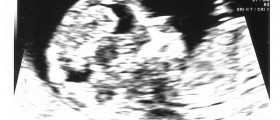
Abortion can be defined as termination of a pregnancy which occurs due to removal or expulsion of a fetus/embryo from the uterus. Abortion can be classified as spontaneous (miscarriage) and induced abortion.
Spontaneous Abortion
Spontaneous abortion, also known as miscarriage, as the name suggests occurs spontaneously without medical or other intervention. Approximately 90% of all spontaneous abortions occur during the first trimester.
One of the symptoms of spontaneous abortion is heavy menstrual bleeding. This is typical for 10th week spontaneous abortion. A woman may bleed for several days and the bleeding is accompanied by cramps. What follows is removal of the contents from the uterus and additional bleeding until the lining of the uterus completely heals. In case of miscarriage after the 12th week a woman experiences symptoms which resemble those during delivery. There are strong contractions, the cervix dilates and the fetus is expelled. And finally, spontaneous abortion between the 13th and 24th week of pregnancy occurs due to problems with the placenta or the cervix dilates prematurely. The symptoms in this case are actually the same as those during delivery.
There are several subtypes of spontaneous abortion. In threatened abortion the symptoms include vaginal bleeding and cramps and the cervix is closed. Inevitable abortion features with heavy bleeding and dilatation of the cervix. A woman also suffers from lower abdominal cramping. In complete abortion all the contents from the uterus are expelled while incomplete abortion features with remnant parts of the placenta inside of the uterus. These remnant parts are eliminated either with medications that induce labor or with surgical curettage. And finally, there is missed abortion, a condition in which an intrauterine pregnancy ends before the fetus can survive outside the uterus because it has not reached viability.
Induced Abortion
Induced abortion is artificial way of terminating the pregnancy. It is performed with the assistance of certain medications or surgically.
There are several methods for induced abortion. Menstrual extraction is a method commonly used for abortions which are performed during the first trimester. The procedure includes sucking out the lining of the uterus through a thin opening of the undilated cervix. Dilation and evacuation is another method generally applied in late first and early second trimester. This method also includes suctioning but in this case the cervix is first dilated. In some cases instead of suctioning the content of the uterus is removed with curettage.
Second trimester abortions are generally induced by injection of prostaglandin or saline solution through the uterine wall and into the amniotic sac. These substances induce labor and delivery of the fetus. And finally, hysterectomy is a method which resembles caesarian section. The procedure includes opening of the uterus through a small abdominal incision line and removal of the fetus. Hysterectomy requires general anesthesia and is performed only if other treatments fail. It is basically used between the 12th and 24th week of pregnancy.
















Your thoughts on this
Loading...